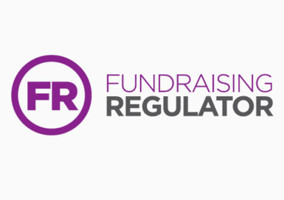David Ainsworth’s piece provides useful food for thought and some valuable feedback. He is right that, two years since the Fundraising Regulator’s birth, now is a good time to review our progress –and where things can be improved. This is something we have been busy working at over the past few months.
That said, two years remains a short amount of time. I would be surprised if any new organisation achieves perfection within twenty-four months. The Fundraising Regulator remains a work in progress and it would be unfair and impatient to now wonder if we should call the whole thing off. Such impetuousness is best left to Premier League chairmen or perhaps England’s batsmen.
Value for money
We agree that the Fundraising Regulator would benefit if more people paid the levy, seeking payment has consumed a large amount of resource and we are limited in what we can do by our budget.
Data issues were one factor, with our projections based on the available data in 2016. This came from the Charity Commission’s annual returns, some of which were inaccurately completed by charities. Data is now much more accurate, and the main issue is a small number of charities not paying the levy or, almost worse, not replying at all.
Thankfully, payment rates have increased to 93 per cent and the second-year levy raised over £1.9m. We are grateful for this support. It ensures that we do a good, responsive job. However, another £300,000 would allow us to be more proactive, to test attitudes to fundraising, promote our service to the public and share our learnings with the sector amongst other more proactive work.
There is no excuse for expected levy payers not paying. Payment shows that a charity is committed to ethical, transparent fundraising. Those who do not are freeloading and riding on those many charities which have accepted the need for self-regulation.
The ‘smaller charities’ that David highlights spend at least £100,000 on fundraising and tend to have at least a £1,000,000 turnover. Ask a member of the public if that’s small. Genuinely small charities sit outside of the levy, although many have registered for a nominal annual sum of £50.
Of course, we must offer value for money to the sector by engaging charities of all sizes, whether they are globally recognised or not.
As one example of how we do this, our dedicated GDPR guidance helps charities understand complex regulation. We worked with the ICO to host a major conference to educate charities about the regulation and run an online tool to aid compliance. This service is freely available, unlike some of the alternatives offered to the sector.
We have also modernised the Code of Fundraising Practice, turning a mass of jargon and technicalities into a streamlined, searchable digital tool that is far more accessible for charities of all sizes. We have worked closely with the Institute of Fundraising (IoF) to produce the “bite-sized” guidance which we know how has been hugely helpful to charities of all sizes.
More engagement with the sector is to come, such as the IoF complaints handling training, which is based on our guidance and has been created in partnership.
The Fundraising Preference Service
The Fundraising Preference Service (FPS) is developing well. We agree that there is a need to get more people using the Service and we are committed to doing so, which is why we recently launched several campaigns to test how best to do this.
There is, however, a balance. Civil Society’s readers would be unimpressed if we promoted FPS too aggressively and this resulted in significant income and donor loss for charities.
Also, the Service shouldn’t just be judged by figures. It is important that members of the public simply have the option to block communications and, to some degree, lower numbers reflect a sector that is successfully and respectfully engaging donors.
David’s assertion that “many” users are journalists does not add up. FPS is mainly used by the public and it is important and significant that more than a quarter of users are registering on behalf of others. This means that we are helping vulnerable people, who would otherwise be left overwhelmed by direct marketing. This impact cannot be simply quantified by pounds and numbers.
The Fundraising Preference Service is an effective model which requires greater, sustained promotion. The alternative ‘reset button’ was found to be a blunt, impractical tool that was unpopular with charities and unnecessary for the public.
An open organisation
We are not a closed organisation. We go to great lengths to be open and it’s a struggle to understand how anyone could think otherwise.
Our website features anonymous case studies for other charities to learn from, with names only used when necessary or when our recommendations are ignored. More of these will be published soon.
We published our first annual complaints report last year and another will follow in the autumn. This will be formatted differently to our first one and those published before by the Fundraising Standards Board. The format needs updating so it is useful for charities.
What’s more, we are always open to interviews, whether the outlet is left-wing, right-wing, the BBC or – as is often the case – a sector specialist. That is the responsibility of a public-facing organisation and, as David and his team will know, we try our hardest to be open with journalists. A quick Google search shows more than 3,000 articles mentioning our name, so this is no mean feat in two years.
As ever, charities are more than welcome to get in touch should they have any questions or need advice. We always want to hear from the sector.
The way forward
Fundraising has improved since 2016. The language used by the regulator’s team, including Lord Grade, has changed to reflect this and attendees to our annual review event in July will have noticed as much.
However, the problems of the past cannot be ignored. Lord Grade made hard-hitting points in the language he used then and, while much improved, we cannot pretend that things are suddenly perfect now.
It is too easy to say that most problems have been dealt with and that the worst acts are committed by fundraising agencies. Even if this is the case, their behaviour is the responsibility of the charities who employ them. Meanwhile, charity bag fraud and other unlawful acts are a police matter.
A statutory model, which David seems to support, is not the answer. The sector would not benefit from a more powerful regulator with a bigger stick, funded by a mandatory levy. I doubt that many people think that charities should be treated like banks or energy companies. Instead, it’s better to have a regulator that works collaboratively and positively with the sector. We achieve more through that approach to regulation but will not hesitate to name charities if we judge it right to.
We know we have a distance to go and look forward to doing just that, we aim to improve fundraising standards, operate the FPS and support GDPR compliance, provide effective casework handling, support, guidance and research and communicate effectively about our regulation. All of this is explained in our strategic plan for 2018-2021 on our website.
Through working with charities, the IoF and the public, we are helping to secure real improvements. The Code of Fundraising Practice is going to be modernised and we have a large consultation on that starting in September. Charities and the public are gaining from FPS. And, most importantly, fundraising today is being undertaken more ethically, transparently and with the donor put first than was the case when we started out. We have played our part in achieving that.
|
Related articles











